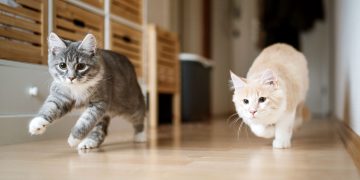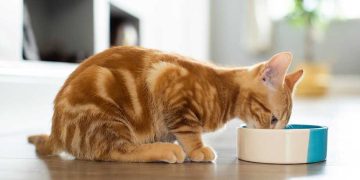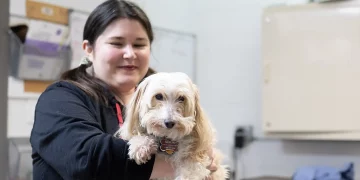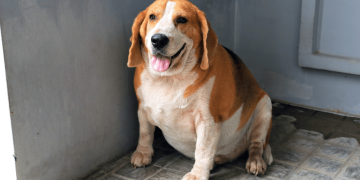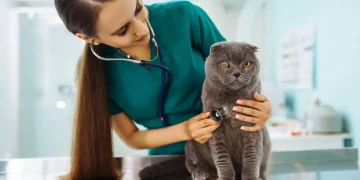Shedding is a natural process for pets, and most animals, especially dogs and cats, will shed some fur throughout the year. However, excessive shedding can become a problem for both the pet and the owner. It can lead to furniture, carpets, and clothes being covered in hair, and it may be frustrating to manage. Understanding the causes of shedding and knowing how to handle it can help reduce the mess and make it easier to maintain your pet’s coat. In this article, we will explore various methods to help you manage and minimize your pet’s shedding issues.
1. Understand the Causes of Shedding
Before tackling shedding, it’s essential to understand why pets shed in the first place. Shedding is a natural process that helps animals regulate their body temperature and remove old or damaged fur. However, several factors can influence how much and how often your pet sheds.
- Seasonal Shedding: Many pets, especially those with thick or double coats, shed more during seasonal changes. They shed their winter coat in the spring and grow a new, lighter coat for the summer, and vice versa.
- Breed-Specific Shedding: Some breeds are more prone to shedding than others. For example, double-coated breeds like Golden Retrievers, Huskies, and German Shepherds tend to shed more due to the type of coat they have. On the other hand, hypoallergenic breeds like Poodles or Bichon Frises shed less.
- Health Issues: Excessive shedding can also be a sign of underlying health problems, such as allergies, skin infections, hormonal imbalances, or parasites like fleas. If your pet is shedding more than usual or experiencing bald patches, it’s essential to consult a veterinarian to rule out any health issues.
2. Regular Brushing
One of the most effective ways to manage shedding is regular brushing. Brushing not only helps remove loose fur but also reduces tangles, mats, and debris in your pet’s coat. The frequency and type of brush you use will depend on your pet’s coat length and texture.
- For Short-Haired Pets: Pets with short fur, such as Beagles or Dalmatians, benefit from regular brushing to remove loose hair and prevent hairballs. A brush with short bristles or a rubber grooming brush works well for these pets. Brush them once or twice a week to keep shedding under control.
- For Long-Haired Pets: Pets with long coats, like Shih Tzus or Persian cats, require more frequent brushing—usually every day or every other day. Long-haired pets are more prone to tangles and mats, so regular brushing is essential to prevent excessive shedding and keep their fur looking healthy.
- De-shedding Tools: For heavy shedders, consider investing in de-shedding tools such as a Furminator or rake. These tools are specifically designed to remove undercoat hair and loose fur, which helps reduce shedding and keeps the coat healthy.
3. Bathing Your Pet
Bathing your pet can help with shedding by removing loose hair and preventing hair from accumulating on your furniture and clothes. However, you should be careful not to bathe your pet too frequently, as over-bathing can strip their coat of essential oils, leading to dry skin and more shedding.
- Frequency: Bathing your pet every 4-6 weeks is usually sufficient unless your pet gets particularly dirty or has a specific skin condition that requires more frequent bathing. Always use a pet-safe shampoo that suits your pet’s coat type to avoid irritation.
- Proper Drying: After bathing, gently towel dry your pet to remove excess water and use a brush to remove any loose fur. This process helps reduce shedding and prevents hair from sticking to your pet’s coat as it dries.
4. Provide a Balanced Diet
A healthy diet plays a significant role in your pet’s shedding. Poor nutrition can lead to dry, brittle hair and increased shedding. To help reduce shedding and promote healthy fur growth, ensure that your pet’s diet includes all the necessary nutrients.
- Protein: Ensure that your pet’s diet contains enough high-quality protein, as protein is essential for healthy hair growth. Look for pet food that lists meat as one of the first ingredients.
- Omega Fatty Acids: Omega-3 and omega-6 fatty acids are beneficial for your pet’s skin and coat. Foods that are rich in these fatty acids, such as fish oil or flaxseed, can help reduce shedding by keeping your pet’s coat healthy and hydrated.
- Supplements: If your pet has dry skin or excessive shedding, your veterinarian may recommend adding supplements like omega-3 fish oil or biotin to their diet to help support a healthy coat.

5. Hydration and Skin Care
Dry skin can exacerbate shedding, so keeping your pet well-hydrated is essential. Dry, flaky skin often leads to more shedding, as your pet may scratch or groom excessively to soothe irritation. To promote healthy skin and coat, ensure that your pet always has access to fresh water.
- Hydration: If your pet isn’t drinking enough water, try offering wet food or adding water or broth to their dry food to increase their fluid intake.
- Skin Moisturizing: Consider using pet-safe moisturizing sprays or oils designed to hydrate your pet’s skin. These can help reduce dryness and itching, ultimately reducing shedding caused by skin irritation.
6. Use Anti-Shedding Products
There are a variety of commercial anti-shedding products available that can help reduce the amount of fur your pet sheds. These products include shampoos, conditioners, and sprays that are designed to minimize shedding and promote a healthy coat.
- Shampoos and Conditioners: Specialized anti-shedding shampoos can help remove dead fur from your pet’s coat while also conditioning the hair to keep it healthy and shiny. Look for shampoos that are gentle on your pet’s skin and suitable for their specific coat type.
- Anti-Shedding Sprays: Some sprays are formulated to coat the hair and reduce shedding by making it easier to remove loose fur. These sprays can be used before or after brushing to help minimize hair loss.
7. Keep Your Home Clean
While managing your pet’s shedding through grooming and diet is crucial, it’s also important to keep your home clean to manage the hair that accumulates in your environment.
- Vacuum Regularly: Vacuuming your floors, carpets, and furniture regularly can help remove hair and prevent it from building up. Consider using a vacuum designed specifically for pet hair, as these models are equipped with stronger suction power and specialized brushes to capture pet hair effectively.
- Lint Rollers: Lint rollers are great for quickly picking up pet hair from your clothing and furniture. Keep one on hand to remove stray fur whenever necessary.
- Wash Bedding and Furniture: Your pet’s bedding, blankets, and any areas where they like to rest should be cleaned regularly to remove accumulated hair. Wash these items frequently to reduce shedding in your living space.
8. Consider Professional Grooming
If your pet’s shedding is particularly difficult to manage or if you don’t have the time to brush and bathe them regularly, you might want to consider professional grooming services. Groomers are trained to handle shedding issues, and they can provide services like de-shedding treatments, professional baths, and nail trims to keep your pet looking and feeling their best.
9. Manage Stress and Anxiety
Stress can sometimes lead to excessive shedding in pets. If your pet is anxious or stressed due to changes in their environment, routine, or social interactions, it can trigger excessive hair loss. Addressing the root cause of your pet’s stress may help reduce shedding.
- Create a Calm Environment: Ensure that your pet has a quiet, comfortable space where they can relax. If they’re anxious due to loud noises, try providing a safe space where they can retreat.
- Exercise and Play: Regular physical and mental stimulation can help reduce stress. Engage your pet in activities that provide both physical and mental enrichment to help them feel more relaxed and less stressed.
10. Regular Vet Checkups
If your pet’s shedding seems excessive or unusual, it’s essential to consult a veterinarian. Excessive shedding can sometimes be a sign of underlying health problems, such as skin infections, allergies, thyroid problems, or parasites. A vet can help identify the cause of the shedding and recommend appropriate treatments or changes to their grooming routine.
Conclusion
Shedding is a natural part of pet ownership, but managing it effectively is key to keeping your home clean and ensuring your pet remains comfortable and healthy. Regular grooming, a balanced diet, proper hydration, and the use of anti-shedding products can all help reduce the amount of fur your pet sheds. If your pet’s shedding is causing issues or if it seems excessive, don’t hesitate to consult with a professional groomer or veterinarian for advice and assistance. With the right approach, you can keep your pet’s shedding under control while maintaining a clean and healthy living environment.






